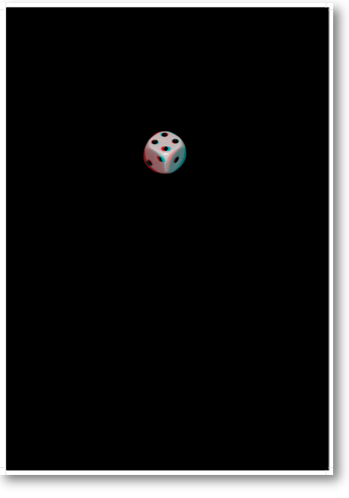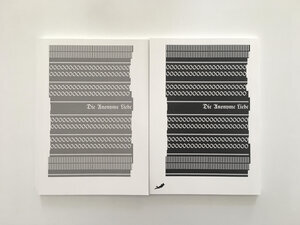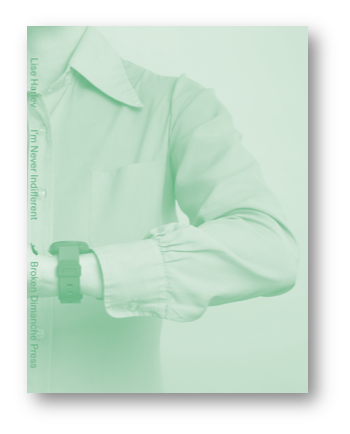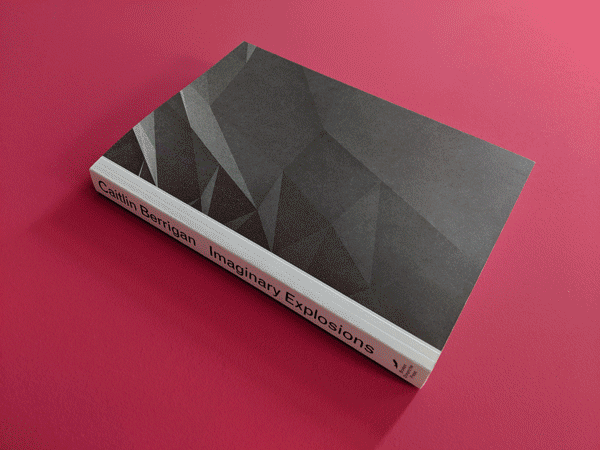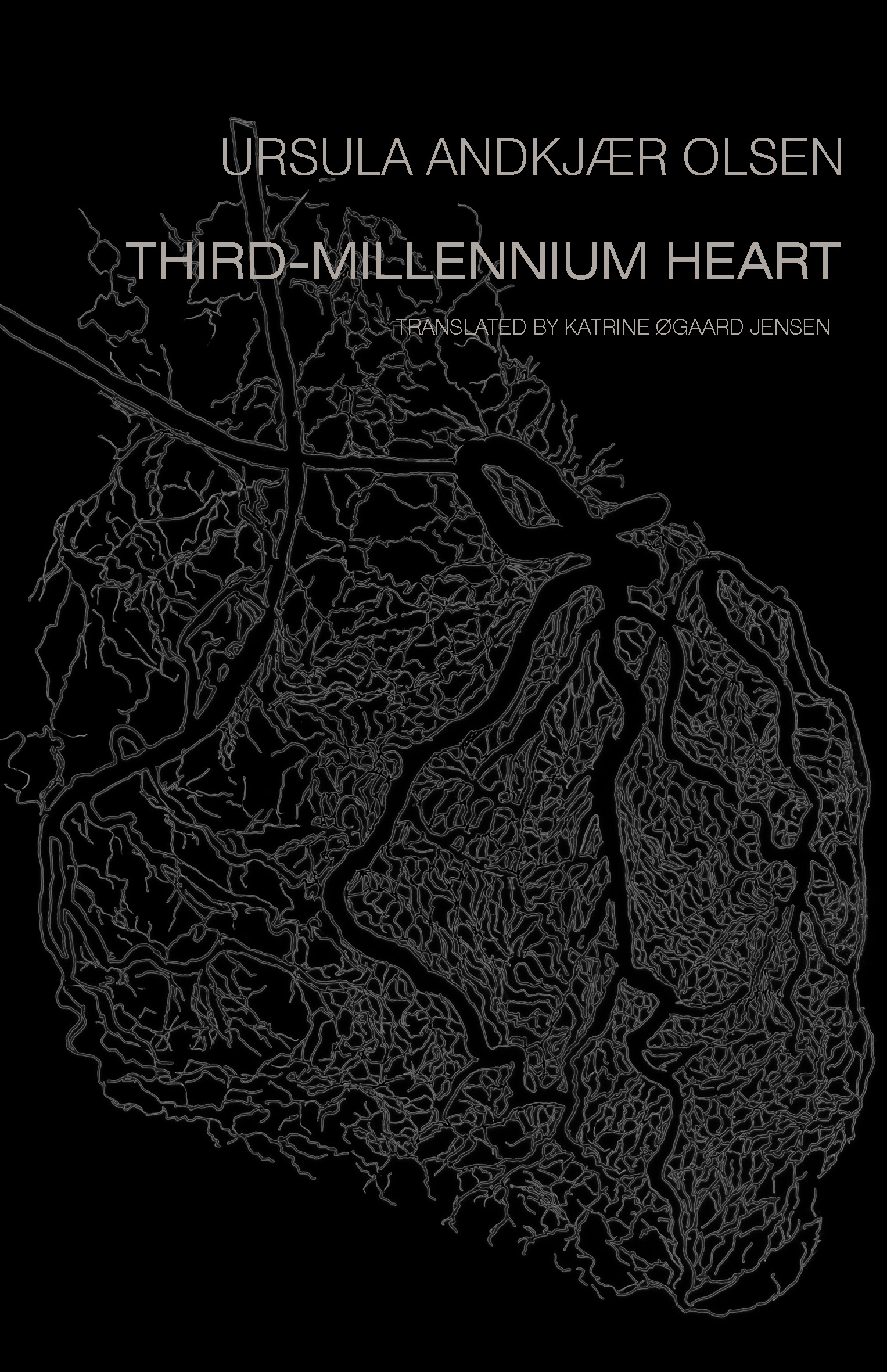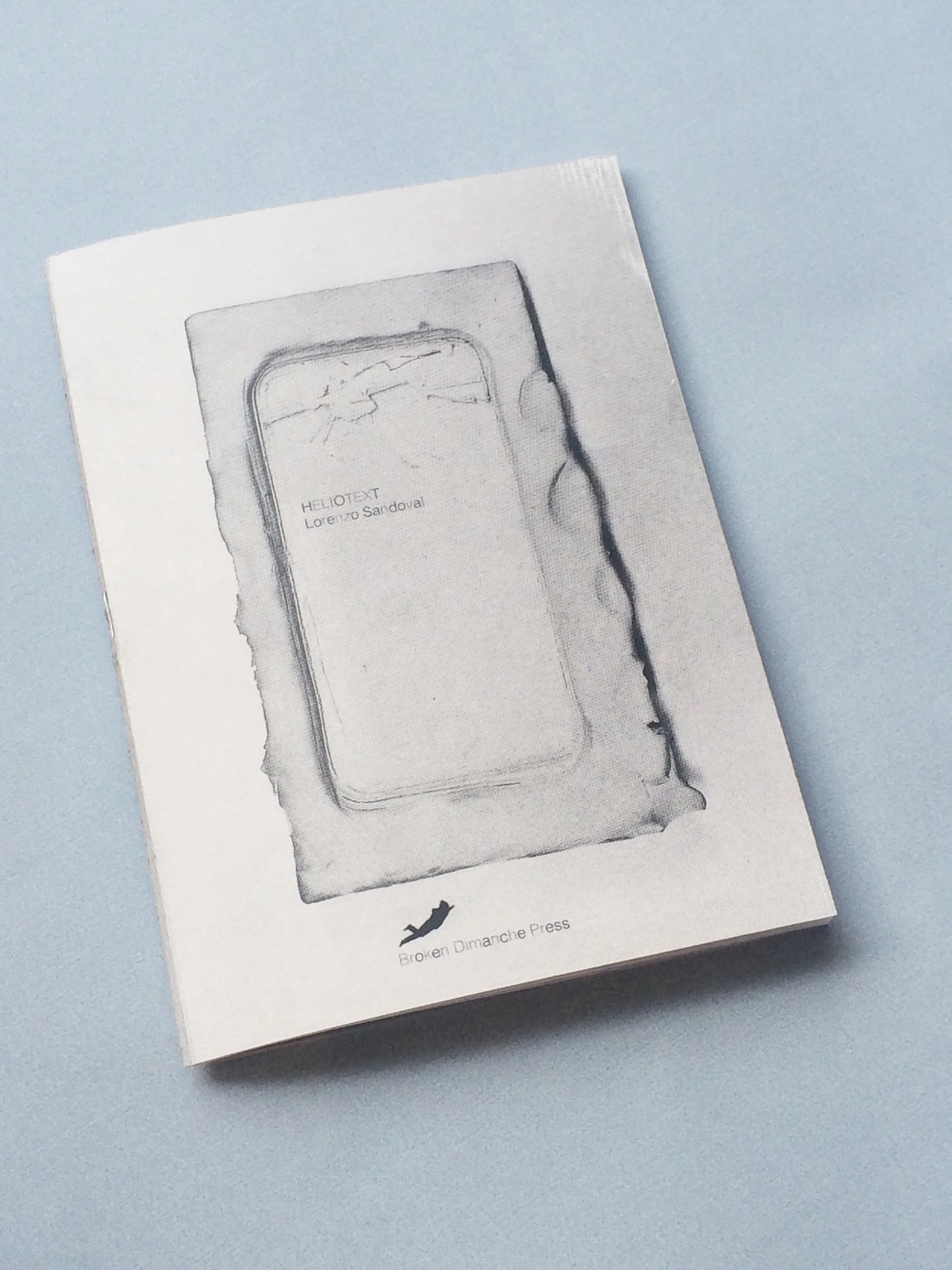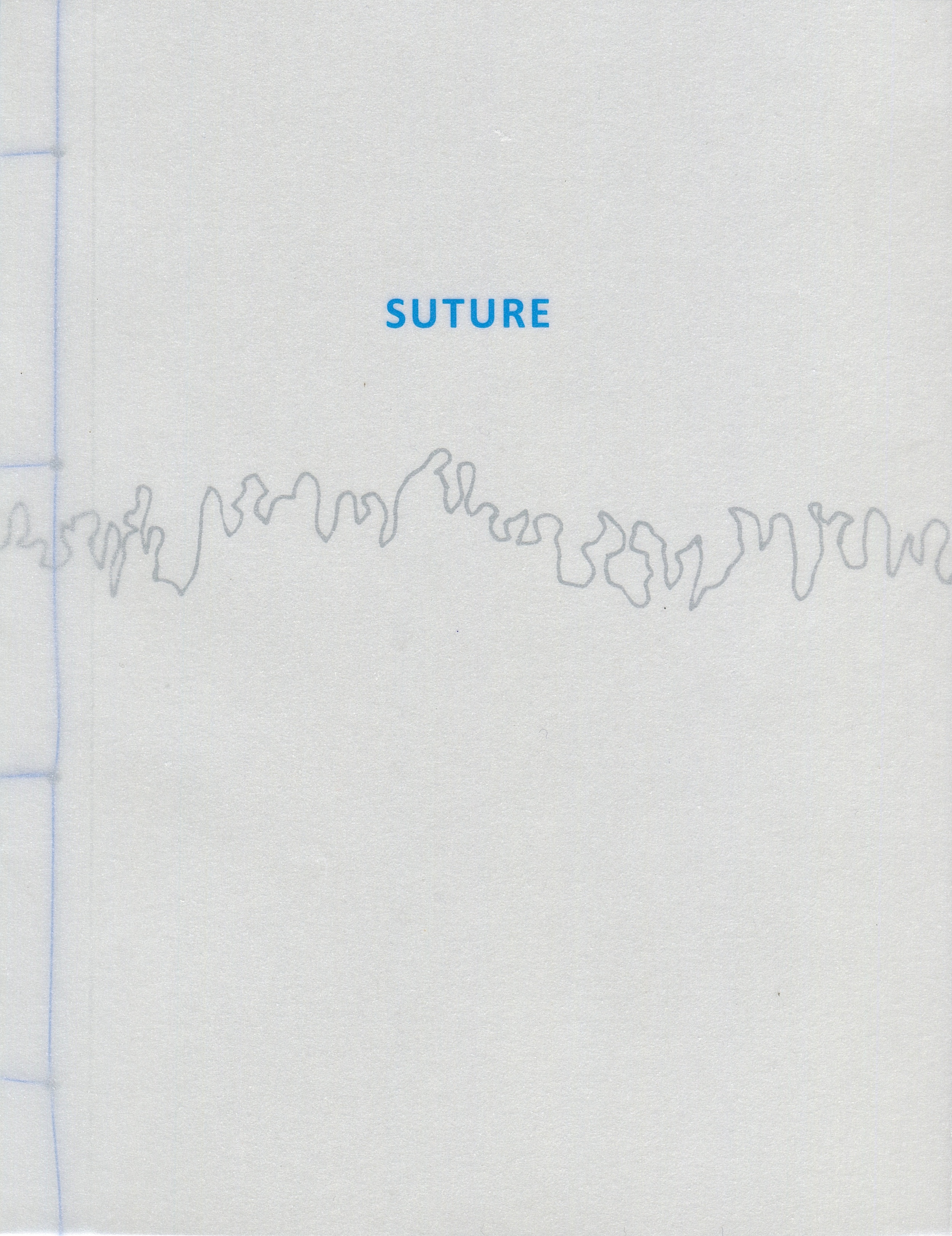Gin
Alchemist Gin
Marcus O Shea
2013 English
5 bottles, gin
12EUR/ bottle
80EUR/ complete boxset
Gin
Single Bottle €12,00 EUR Box set €80,00 EUR
ISBN: 978-3-943196-23-8
Broken Dimanche Press is delighted to continue its haptic, body centered poetry series with a new edition of craft gin housed in bottles home to original poetry. These gins, rich in evocative flavours and lovingly made, are paired with poems of dense lucidity, the creation of Marcus O’Shea. His Alchemist series of gin is continued with the second through to seventh of the new gins. All bottles can be bought separately or collectively housed in a bespoke case.
The tasting notes are as follows.
Pines and Pines (#002) - a strong profile of pine fresh juniper and a gentle bath of tea leaf smoke
I Will I Will (#003) - Strong and bright citrus peel notes with a floral burst of hibiscus and Andalusian rose
The Sea Rose Up (#004)- Sea botanicals and a vapour bath of salt and tea tree recall the scent of ocean mist
Yellow (#005) - An eccentric and electric mix of exotic spices with an infusion of rich saffron
Spices/Water/Flowers (#006)- Wild rosemary plucked from a Spanish castle lends a fresh and pungent counterpoint to the soft bouquets of wild lavender.
-----------------------------------------------------------------------------------------------------
About:
Marcus O’Shea is a multi-disciplinary artist and gin maker: Born in Singapore to Irish parents, he’s never called one country in particular home. He works in diverse media, including performance, poetry and alcohol production, with a special attention paid to non-visual sense experiences, he began his career in gin-making and alchemy while studying in Scotland, where he taught himself distillation and began to experiment with unusual flavourings and ingredients. Currently, he lives and works in Berlin, where he produces Alchemist Gin in collaboration with Agora Collective. http://www.marcusoshea.com/
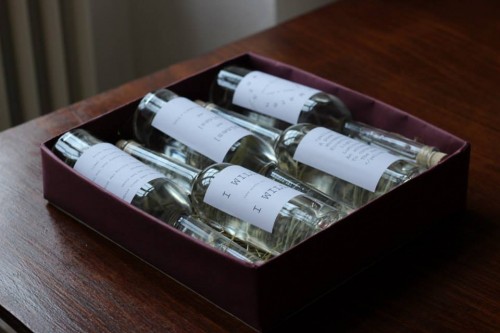
Body Searches - Jon Ståle Ritland
Body Searches
Jon Ståle Ritland
Translated by Ida Bencke, Eirik Sördal & John Holten
Design: FUK Graphic Design Studio
2013 English
19 x 24.5 cm, 54 pages,
Softcover with French Flaps
ISBN: 978-3-943196-18-4
Jon Ståle Ritland shows from the very first letter that he is the master of the art of writing poetry one can’t get enough of…
– Arne Hugo Stølan, Verdens Gang newspaper
In a world of advancing science and an ever-greater understanding of the mysteries and machinations of the body, Ritland has updated in a breathtaking way the age old poetic quest of exploring the human experience through image and metaphor. As timeless as the initial impulses behind this collection may appear, the formal exigencies Ritland has employed makes for a contemporary poetics that points towards a new way of expressing the inner structures and forces in all of us.
Several processes of communication are continuously happening in the cells and organs of the body. Human language can be seen as a further development of these. Genetic material or DNA is a prerequisite for this internal communication. The four bases: adenine (A), guanine (G), cytosine (C), and thymine (T) constitute what you might call the codes or the letters in the language of the genes. The sequence and composition of the letters are decisive for the synthesis of proteins and signal substances. The poems in Body Searches are inspired by the grammar of the genes and the structure of the DNA-molecule and they endeavor to try and unravel, in a new way, the old question: what is a human?
Broken Dimanche Press is proud to present Ritland’s first book in English translation and it marks a continued interest in how the phenomenological, organic and indeed the medicinal, can lead to an expanded corporeal poetics that views the body and its workings as an integral part of literature, both in its creation and reception.
To coincide with the publication, a website www.Bodysearches.com has been created; it comprises artwork made by Michiel Koelink and was designed by FUK Graphic Design Studio, Berlin who also designed the physical book. A public reading from the work, along with a screening of this artwork - which saw Koelink collaborate with the author on a 3D projection which implements ways of displaying poetry according to a genetic model of the DNA-molecule - will take place in Berlin on October 18, 2013 in Agora.
Jon Ståle Ritland (1968) was born in Drammen, Norway. He studied at the University of Oslo and the Norwegian University of Science and Technology, Trondheim, specialising in Ophthalmology, and is currently working as an ophthalmologist in Ålesund. His doctoral thesis from 2008 was titled Primary Open-Angle Glaucoma & Exfoliative Glaucoma, Survival, Comorbidity and Genetics. His publications include the poetry collections Kroppsvisitasjoner [Body searches] (Aschehoug, 2004) and Vannmerker [Watermarks] (Aschehoug, 2009), and the essay Når det biokjemiske språk inntar litteraturens kropp [When Biochemical Language Enters the Body of Literature] (OEI, 2009).
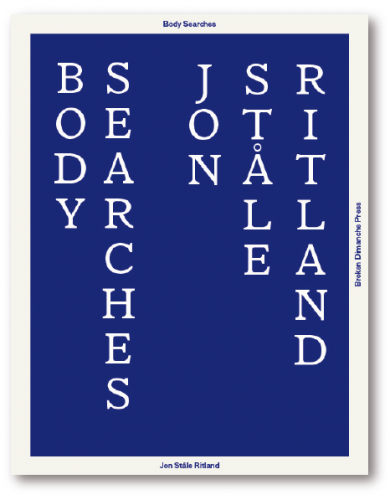
Nuances of No - Hanne Lippard
Nuances of No
Hanne Lippard
94 pages, softcover
12,7 x 18,4 cm
ISBN: 978-3-943196-13-9
Order a copy for just 12EUR and enjoy free worldwide postage!
:)
It is with great pleasure for BDP to announce the publication of Hanne Lippard’s Nuances of No, the first comprehensive collection of the artist’s text work. Over the last number of years Lippard has built up an impressive and equally idiosyncratic practice based at the meeting point of words, performance and visual art.
When composing her texts Lippard relies on the sounds that they trigger in her mind when she is writing but crucially also when she is speaking. The use of her voice has gained for her a typographical insistence, becoming her main medium of expression whether it be through the linearity of a mechanical narrator or through the use of her voice as a more personified melodic rhythm during her compelling live performances.
Her affinity with common speech ensures that hers is nothing less than a poetry that all of us can recognize. Common sayings, turns of phrase, everyday chitchat become for her a repeated chorus rather than a coherent meaningful construction of words: with Lippard they become melodies in themselves.
Aphorisms, love-songs, voicemails, quotes and slogans lose or gain value depending on how they are re-arranged and performed – in Nuances of NoLippard reclaims language for her own end to try and overcome any overruling claim to authorship. At times graphic, playful and intimate, this is an artist using language in all its forms in an effort to create an original aesthetic of the word.
Hanne Lippard (b. 1984, Milton Keyes) graduated from the Rietveld Academy in Amsterdam in 2010. Her most recent exhibitions have been in Galerie Nord, Berlin, Marres, Maastricht, Suvi Lehtinen Gallery, Berlin in collaboration with Kati Kärki, TETO projects, Amsterdam and Spike Island, Bristol. She has most recently performed in Badische Kunstverein in Karlsruhe, ARCO Madrid 2012, The Showroom, London, Frutta Gallery, Rome, Poesia en Voz, Mexico City.
Lippard has been most recently shortlisted for the inaugural Berlin Art Prize.
www.hannelippard.com
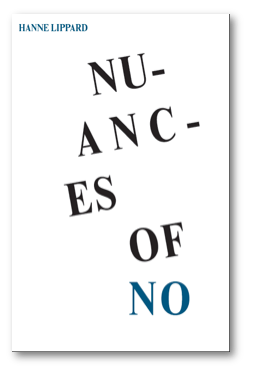
Wordpharmacy - Morten Sondegaard
Wordpharmacy is a concrete poetical work, which playfully equates the structure of language with pharmaceutical products.
ISBN: 978-3-943196-05-4
Edition: 500
By rewriting already existing instructions for the use of medicine, Wordpharmacy playfully intertwines the structure of language with the healing principles of various medicaments. Like pills, language is something to be consumed by the body, and in turn it does not only affect our conceptions of things, but it also comes to designate our very corporal movability in the world. Consequently, words are not only something we consume, they are refractory entities that in turn define and consume us. Wordpharmacy can be seen as a poetical gesture endeavouring to let words work their magic from within the body itself.
Wordpharmacy
Limited Edition Multiple (Complete Box Set), €50,00 EUR 10 Box Set €30,00 EUR 1 Box (Adverbs, Conjunctions, Articles or Numerals) €5,00 EUR 1 Box (Interjections, Prepositions or Pronouns) €4,00 EUR 1 Box (Verbs, Adjectives or Nouns) €3,00 EUR
Or you can email: editorkakofonie@googlemail.com
Our Paypal account is: Broken DImanche Press
Broken Dimanche Press is proud to announce the exhibition Wordpharmacy by Danish writer and artist Morten Søndergaard. To coincide with the publication baring the same name, Wordpharmacy is a visual installation that celebrates this ambitious semantic and medicinal project. Playfully equating the structure of language with pharmaceutical products, the publication consists of ten medicine boxes, each representing one of the ten word-groups. Each box contains a leaflet that functions as an instructional poem, guiding the reader’s ingestion of the given word group. In order to fully realise the helpful nature, Broken Dimanche Press are happy to have our Büro transformed by Søndergaard into a literary pharmacy, including authentic apothecary fixtures and fittings.
By rewriting already existing instructions for the use of medicine, Wordpharmacy playfully intertwines the structure of language with the healing principles of various medicaments. Like pills, language is something to be consumed by the body, and in turn it does not only affect our conceptions of things, but it also comes to designate our very corporal movability in the world. The artist himself will be present during Wordpharmacy, ready to prescribe suitable words for bodily as well as psychological malfunction.
Morten Søndergaard’s (born 1964) debut collection of poetry, Sahara i mine hænder (Sahara In My Hands) from 1992 has been followed by a succession of works which have won him both critical acclaim and a number of literary awards. He was twice nominated for the Nordic Council Prize for Literature, and his books have been translated many languages. Constantly exploring new ways to present language, Morten Søndergaard has produced musical and dramatic works and in recordings, exhibitions and installations centred on language, sound and movement. In its Danish version, Wordpharmacy has previously been exhibited at Nikolaj Copenhagen Contemporary Arts Center, Bakkehusmuseet and at The Skovgaard Museum.
Wordpharmacy is translated by Barbara Haveland, designed by Christian Ramsø and published by Broken Dimanche Press. The project is supported by The Danish Arts Council Committee for Visual Arts and The Danish Arts Council Committee for Literature.
Exhibition:
Büro BDP Emserstrasse 43, 12051 Berlin
U&S Bahn Hermannstrasse
Febuary 3 – 16 Vernissage Feb. 2 19 – 22h
Opening times 14-18h and by appointment
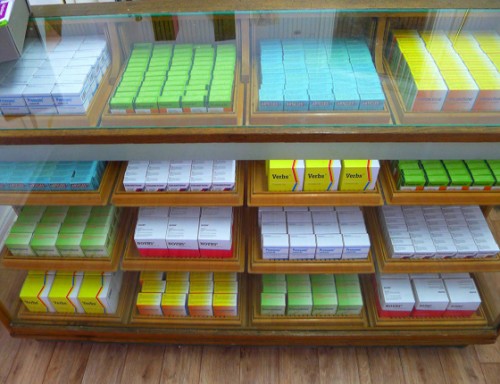
Soap Poetry - Morten Sondegaard
Soap Poetry/Sæbepoesi
Morten Søndergaard
ISBN: 978-3-943196-08-5
Limited edition
Sæbepoesi. Vist på Kunstpublikationer 2012 / Ovengaden som del af udstillingen "Kroppens tegn taler et andet sprog"
Soap Poetry was first exhibited at Kunstpublikationer 2012 in Ovengaden art centre, Copenhagen. It was part of the exhibition "Kroppens tegn taler et andet sprog"
Please contact BDP if interested in purchasing an edition
Genernes raid
gennem varme
universer:
sol gennem sol.
Raid of the genes
through warm
universes:
sun through sun
*
Gribereflekser
inde i skjortemørket:
alting prøver
at nå sig selv.
grasp reflex
inside shirt darkness
everything tries
to catch itself
*
Gav vi virkelig
dette fedtsprog liv
talte vi det
uden at tænke
på konsekvenserne
Did we really give life
to this fat language
did we speak it
without thinking
of the consequences
*
Indmaden tung
og urolig
guts heavy
and restless
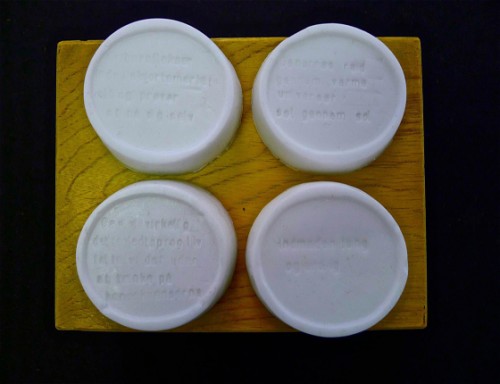
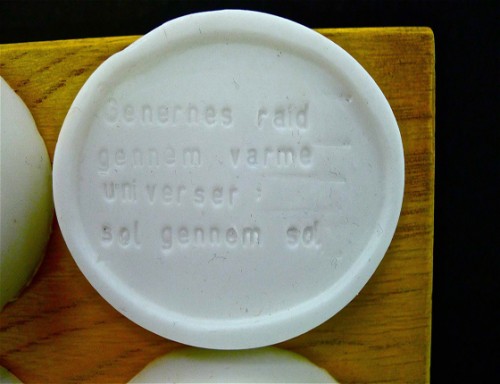
I, Coleoptile - Ann Cotten & Kerstin Cmelka
I, Coleoptile
Ann Cotten & Kerstin Cmelka
2010 English
127 x 184 mm,
88 pages, 25 b/w photos 2 ill., softcover with French Flaps
ISBN:978-3-00-032627-1
€12
Ann Cotten has published numerous work including Fremdwörterbuchsonette(Suhrkamp) which won in the Reinhard-Priessnitz-Preis. She also published a book on concrete poetry Nach der Welt: Die Listen der Konkreten Poesie und ihre Folgen (Klever Verlag) in 2008. The same year saw her receive the George-Saiko-Reisestipendium and the Clemens Brentano Förderpreis für Literatur der Stadt Heidelberg. Her latest book came out in August from Suhrkamp and is called Florida-Räume. I, Coleoptile is her first full length book of work in English.
Kerstin Cmelka is a visual artist and was born in 1974 in Mödling, Austria. Most recently she has taken part in Cold Society at KW69, Berlin, Gestures - Performance and Sound Art at the Museum of Contemporary Art, Roskilde, Denmark (2010), Scorpio's Garden in the Temporäre Kunsthalle Berlin (2010) and Playing Homage, Contamporary Art Gallery, Vancouver (2009). She curated Stolen from my subconscious, KW-Berlin, 03.03.2011 - 03.04.2011
I, Coleoptile is a repetition, but also a public rehearsal for a performance, yet to be seen.
— Lars Gustaf Andersson in Reconstruction 11.1, April 2011
Ann Cotten's poems are among the greatest to be written in German poetry today
— Jochen Jung in Die Zeit, Oct 2010
In I, Coleoptile Ann Cotten (b.1982, Iowa, USA) moves the ironic play with authorship and formal experiments of previous projects to the background and opts for a more intimate approach. At the suggestion of publisher Broken Dimanche Press she has written her first comprehensive collection of poems in English for which she has also collaborated with the Austrian artist Kerstin Cmelka. The end result is a beautifully crafted book in which poems on the theme of ‘emergence’ are alternated with black and white photos that evoke scenes from the infamous 1918 Vladimir Mayakovsky film The Young Lady and the Hooligan.
— Jan Pollet in De Reactor, Amsterdam
from DE MYSTIEK VAN DE SNIJBOON
By JAN POLLET
(www.dereactor.org)
Translation Jeroen Nieuwland
…
In this project Ann Cotten (1982) moves the ironic play with authorship and formal experiments of previous projects to the background and opts for a more intimate approach. At the suggestion of publisher Broken Dimanche Press she has written her first comprehensive collection of poems in English for which she also collaborated with the Austrian artist Kerstin Cmelka (1974). The end result is a beautifully crafted book in which poems on the theme of ‘emergence’ are alternated with black and white photos that evoke scenes from the popular 1918 Soviet film The Lady and the Hooligan. The poet Vladimir Mayakovsky wrote the script for this film, directed it and played the main role. In the photo series Cmelka portrayed Cotten as the male figure - the hooligan (character) annex Mayakovsky (actor) - who in the end is beaten up. This seems to suggest an identification with the Russian poet, rebel and communist. In the poems Cotten only once refers explicitly to Mayakovsky, notably in the last poem ‘Take away Kasbek’. ‘If this / mountainous / holy heap / is in the way, / then tear it down’, she says resolutely about Kasbek, the third highest peak in the Caucasus in Georgia, also Mayakovsky’s birthplace. Kasbek here is symbolic of everything that obstructs our view and because ‘our way is mistier than mist’ it is important to eliminate any obstacle. The final verses of this poem express an intense desire for clear (spiritual) vistas where the green mist, which hangs over the book, has finally cleared away.
But now what to make of that misty word ‘coleoptile’ from the title? It is a term from botany and denotes the membranous sheath of grassy plants, which encloses the plant shoot. It is the membrane that protects the germinating seed in the ground until it is strong enough to develop into a full plant. It is, therefore, an enclosing form fully at the service of an emerging organism. Or to paraphrase: I Coleoptile am only the provisional shell of a flawless bean becoming. It is tempting to see in this a metaphor for the ephemeral body versus the eternal soul.
On the blurb Cotten presents the book as a study on the ‘green bean’ whose form ‘is not public or private, neither phallic nor vaginal; if anything, it resembles the vague idea of a soul or astral body [...]’. A platonic interpretation offers itself: if the flawless, green bean is a model for the soul, the coleoptile is the symbol of the protective, but also restrictive body. Cotten opens the collection with a short piece of fierce prose: ‘The fucking green steam is full. A large depression has spread from one end of the sky to the other. […] All this ‘coming up to say hello’, fuckin plants, bad green, bad idea. [...]’
After this the word is given to the green bean’s budding seed. It feels confined and laments the tight fitting coleoptile, ‘I’m yearning and striving and goofing around, I am posing and feeling, but my feeling doesn’t go anywhere.’ Nonetheless, Enzo (that is the name of the budding seed) is addressed encouragingly:
O Enzo
thou sprout
coat of ow
out of coat
out of that
now.
We follow the genesis and the painful labouring of Enzo up to and including his disappearance: ‘Enzo tries, dries, dies. A variety of poetic forms reflects on themes such as ‘travel’, ‘displacement’ and ‘desire for understanding’. Regarding the latter coleoptile is also a cause of the unknowability of life. It then functions as an impermeable membrane between consciousness and reality, and could be a symbol for the inadequate understanding with which every person is condemned. In other words: In the brave efforts of the seedling we recognize our own attempts to achieve clarity and lucidity. And yet from all of these texts speaks the desire to remove all that hinders understanding, even the Caucasian Mount Kazbek. Occasionally Cotten gives the impression that the development from seed to mature plant is only a first stage towards a higher understanding, which could indicate a (tentative) venturing into mystical paths. Moreover, the notion of seeing in the smallest (a seed) a reflection of the cosmic, recalls a common tenet of mysticism.
But Cotten wouldn’t be Cotten if she would allow herself to be pinned down to a single mystical longing. There is no escaping the human condition as is clearly stated on the back cover: ‘If the circumstances require it, the American Socialist will show a sense of humour; and he will continue to do so until someone has figured out how people can live without food, love and shelter. InI, Coleoptile Cotten plays multiple registers at once: from philosophical-symbolic and mystical, to the contemporary reality of the Internet and pop songs. No genuine human feeling is passed over in the process. This simple love poem, for instance, is one to be reckoned with. Gone is the ironic playing about, gone the cerebral, hermetic Cotten. Full of spontaneous surrender she addresses the beloved in the most simple and direct words that could have come from a pop song.
Love me, love me, run your fingers
from my head all the way down
to where I stand on the ground.
Ask me, ask where I will go
cascade of ideas and lust
do I have the guts to know
what will lie apart and what is just a blow?
Find me, find me, as your playing
ceases to be all, by chance
upon a racing corner,
comet, glance.
Hidden in the inside of the folded back cover is the last poem, aptly named ‘Last’, in which the poet confesses that she has retreated into the cocoon of language. Language as the last protective membrane until her death.
‘Last’
No longer do I pass the intentions by but
I miss the rest. I am a woman as yet
in a cocoon. I am embarrassed
that one has caught me as I unfold
my first wing, still in the “real,-”bag.
Your hairy arms
o how I could swarm, admire!
How I could roll my segments
thunder-clean, I was stark cushions
with enough feet for all the world.
But he who touches me now gets splinters
and I go through the alphabet
in order to conclude, until my death.
Now please feed my pelt with poems
and with time. So much time, so many times a single beer.
I hear your voices. I am here.
With this lonely endpoint Cotton concludes a mysterious cycle of passion. Or so it seems: as an afterthought there follows a joke for adults:
What does a sun do when it sees a shiny blade of grass?
– Make hay.
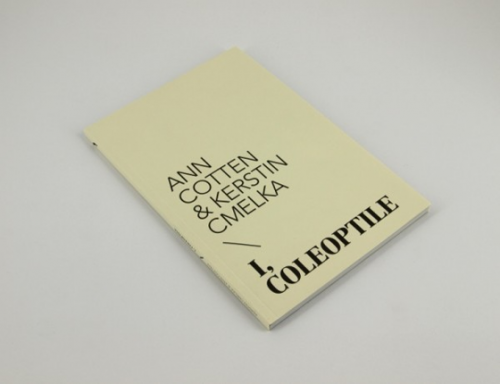
Un Coup de 3Des - Brian Larosche
Un Coup de 3 Dés
Brian Larosche
ISBN: 978-3-943196-06-1
Edition: 200 numbered
35 cm x 50 cm, 28 pages with 3D steroscopic spectacles
€20
+ postage and packaging only €7
Largescale limited edition in 3D of Mallarmé's landmark poem from 1897
The terrible idea that the avant-garde past cannot teach us anything today and that we in turn cannot teach our avant-garde precursors any new tricks is flattened by this monumental (it is indeed very big) edition by Brian Larosche, a beautiful, playful edition to the family of books.
There is an imperative today for books to know themselves as it were, to be sure of their place in the world: proud, assertive, bold, daring; for bibliophiles and lovers of poetry Mallarmé is an almost messianic figure and his Un Coup de Dés is a monument of modernity, the poetic, the visual, the book as space and opportunity, a whole host of 20th century poetic, visual and philosophical highways run out from its cascading lines, and they have yet to reach their termini.
As a publisher it is a dream to produce an edition of Un Coup de Dés.
But not only that – we’re still on the highway – to do so with the vision of a certain Brian Larosche, the irreverent, incessant book sorcerer is nothing but exhilarating. Because if James Cameron can do it, books can do it too. Mallarmé made it clear that books can own space, that they revel in it, that words draw pictures in the mind but also on the page itself; we open a book and walk into it, Larosche has built a new layer to the puzzle of the sailor and the swirling miasma of the throwing of the dice, he has rendered it in 3D no less and by doing so invites us, the reader, to actively don the glasses and enter the ring of this classic poetic bookwork.
'...Coup de dés did succeed in producing effectively an infinite hesitation, a perfect and unexampled hybrid between fiction and reality.' - Quentin Meillassoux
